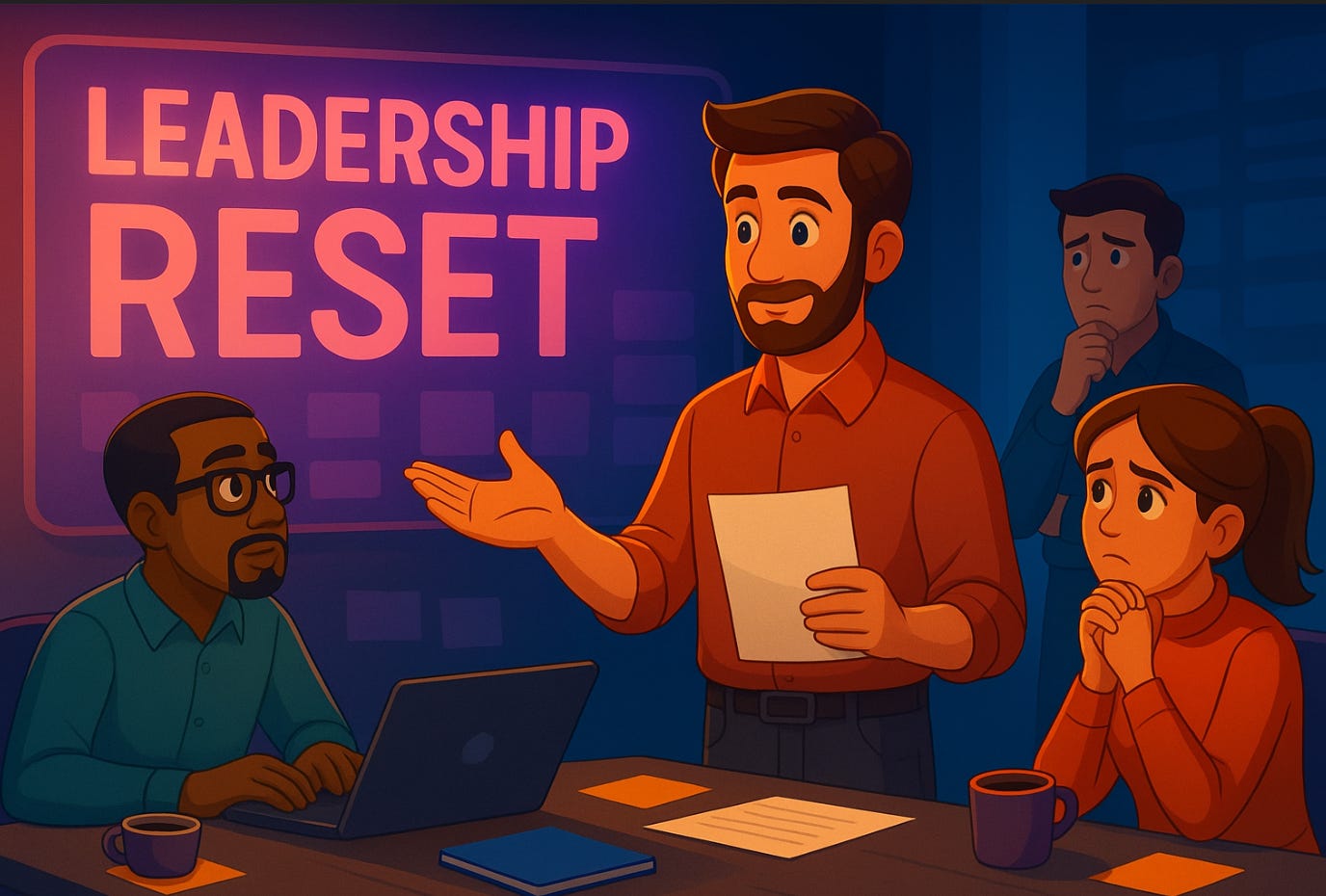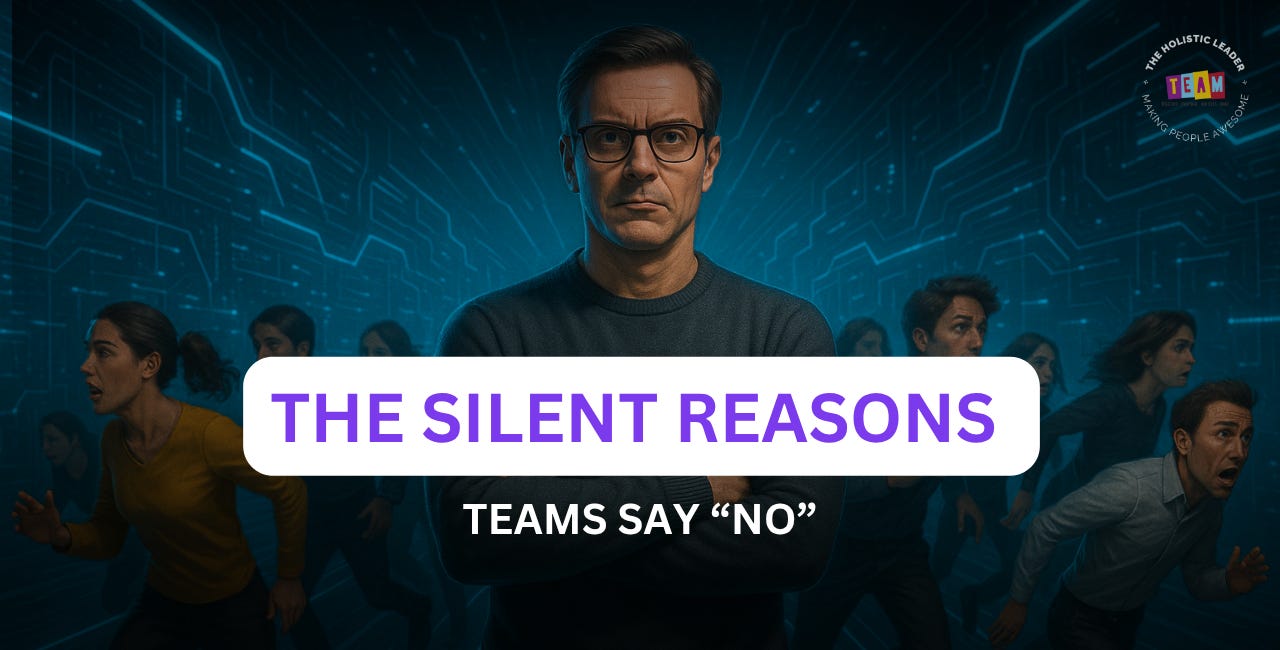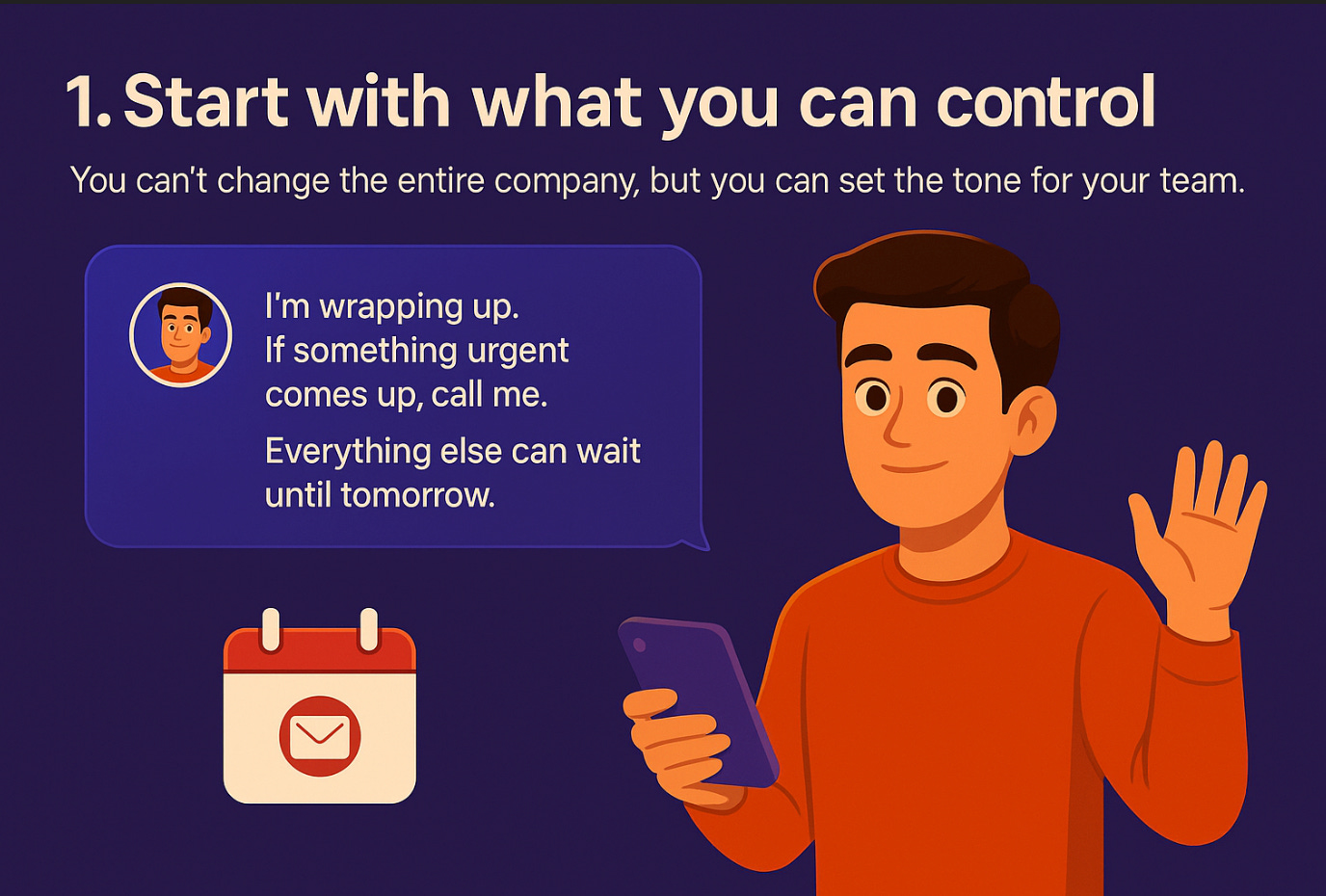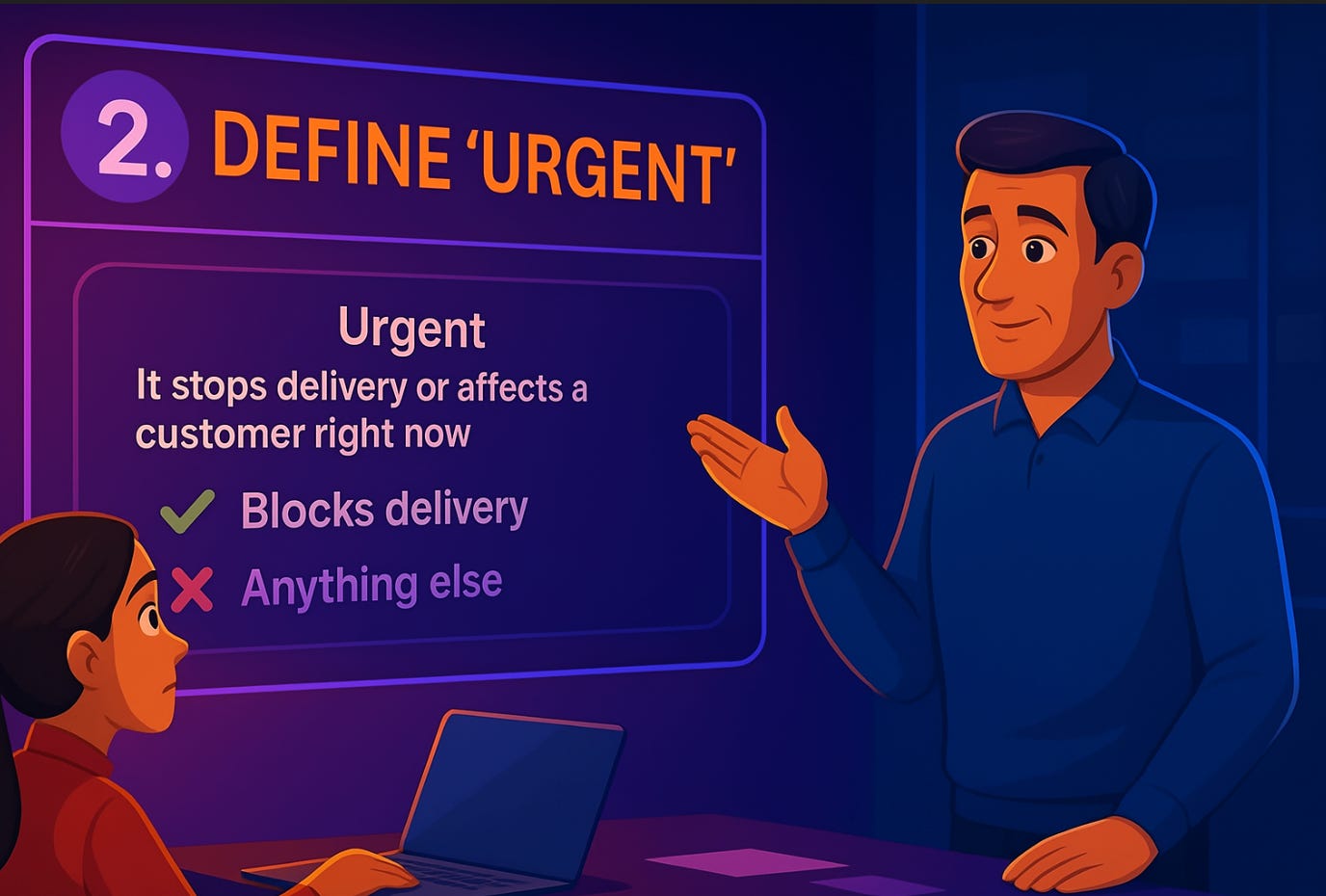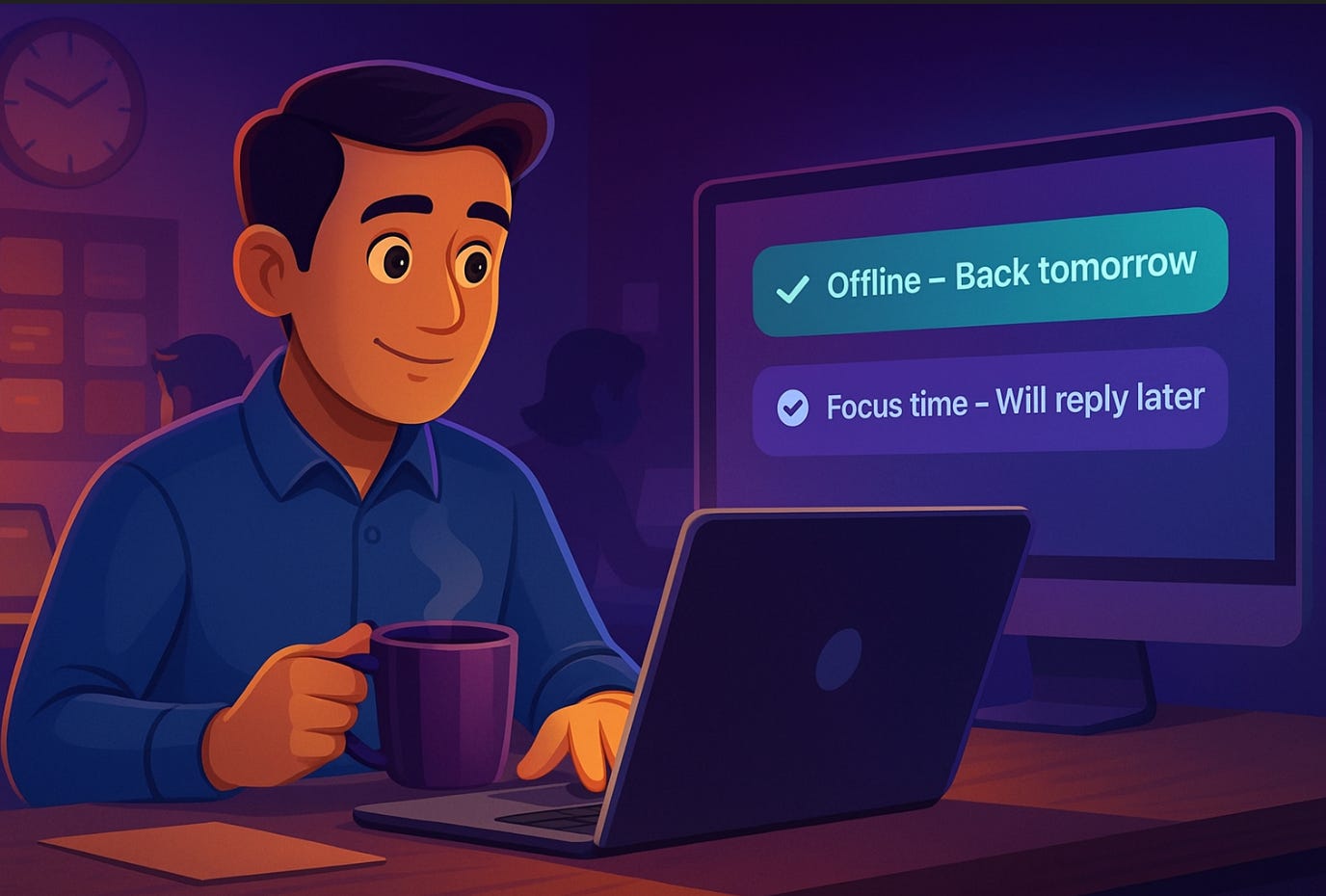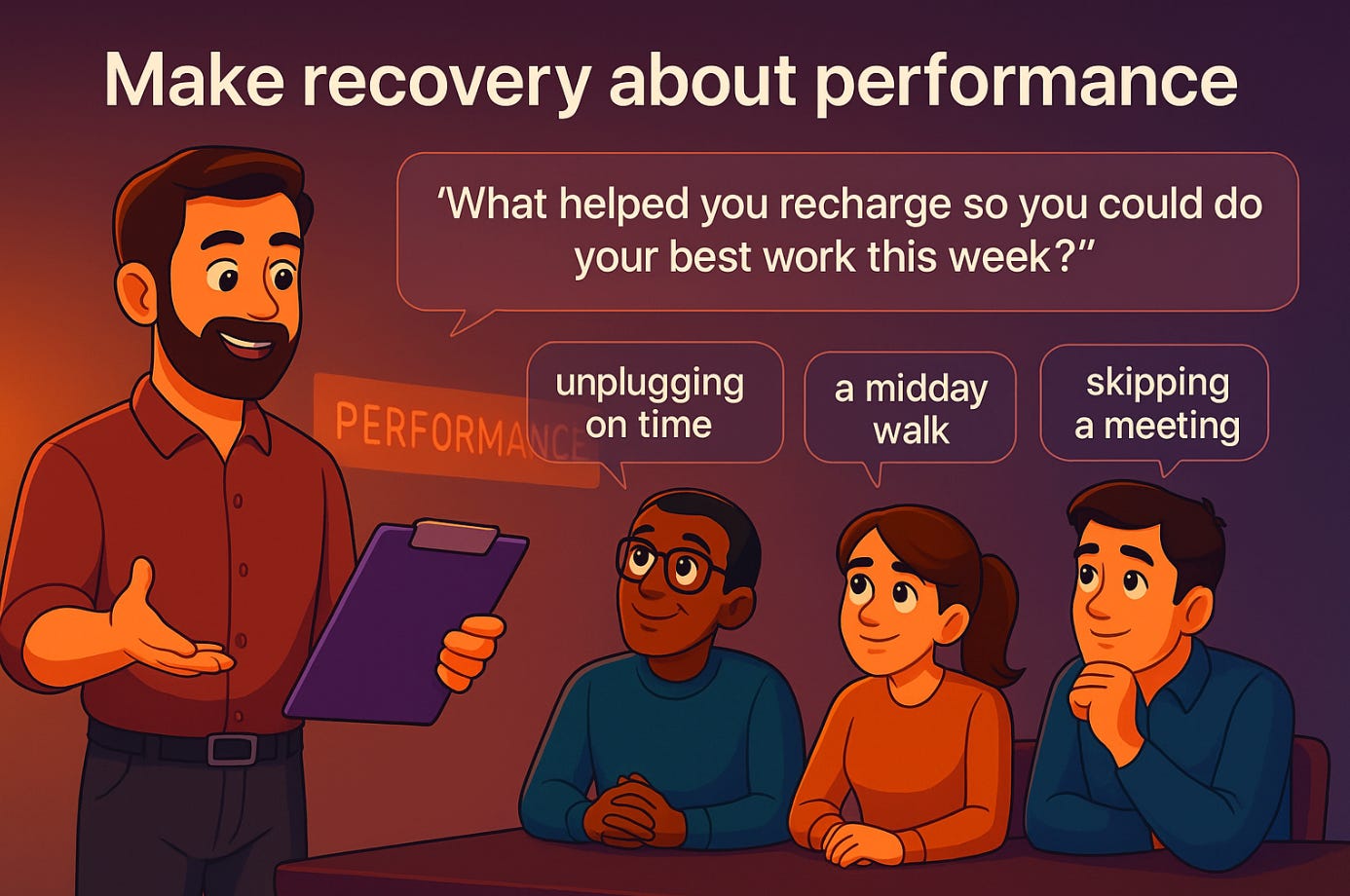The Hidden Cost of Always-On Teams
The cost of always being "On"
👋 Hey, Carlos here! Welcome to “The Holistic Leader”, your weekly source of simple and honest leadership, Agile, Management & team insights.
A few years ago, I thought being “always available” made me a great leader.
I answered emails at midnight.
Jumped on weekend calls.
Kept Slack and Teams open all the time.
I thought that “This shows commitment.”
But it didn’t.
It created stress—for me and for my team.
People stopped disconnecting because they thought that’s what I expected.
And honestly, I didn’t stop them.
Until one day, I saw the signs:
❌ Missed retros.
❌ Shorter stand-ups.
❌ Quiet team members.
❌ Quality dropping.
That’s when it hit me:
Always-on doesn’t make teams better. It burns them out.
The real cost of always-On
Here’s what I’ve seen happen when people never unplug:
Focus disappears. Notifications kill deep work.
Energy drains. Without recovery, burnout is guaranteed.
Ownership fades. When you’re always online, people wait for you instead of taking decisions.
Agility collapses. The Agile Manifesto calls for sustainable pace. Without it, you lose predictability and morale.
👉🏻 Busy isn’t the same as valuable.
But exhaustion often looks like commitment—until it’s too late.
📋 Last Week Posts:
The Silent Reasons Teams Say No
Stop Fixing People, Fix the Environment
Your Team Doesn’t Need a Hero
What is Understood by "VALUE" in Agility?
How to Build a Team Where People Feel Safe to Speak Up
Have a quick question?
Jump into the subscriber chat below and get a fast reply.
The Leadership Reset: My Hardest Lesson
The first step wasn’t for my team.
It was for me.
I believed that being available 24/7 was leadership.
But the truth?
When you’re always available, you create dependency.
You’re solving problems instead of building problem-solvers.
The shift:
My job isn’t to answer everything right now.
My job is to build a team that doesn’t need me every second.
Once I accepted that, I could lead differently.
Why we fall Into this trap
Two reasons drive this culture:
Fear of missing something important.
Fear of looking less committed than others.
I’ve been there.
I wanted to “set the example,” but the example was toxic.
1. Start with what you can control
You can’t change the entire company, but you can set the tone for your team.
Here’s how I do it:
At the end of the day, I say this in the team chat:
“I’m wrapping up. If something urgent comes up, call me. Everything else can wait until tomorrow.”
If I write emails after hours, I schedule them for the morning.
This sends a clear signal:
No one needs to stay glued to their screen just because I’m online.
2. Define “Urgent”
Big companies love “ASAP.” But most things aren’t urgent.
Here’s the rule I use:
Urgent = It stops delivery or affects a customer right now.
Everything else? Tomorrow is fine.
Add this to your team agreement or retro notes.
If someone outside the team ignores it, coach your team privately:
“If it’s not a blocker, don’t feel pressure to answer immediately.”
3. Use silent signals
Sometimes it’s better to lead quietly than make a big announcement.
I set my Slack status after hours to:
✅ “Offline – Back tomorrow”
And during deep work:
✅ “Focus time – Will reply later”
No pushback. No drama. People copy it because they see it works.
4. Protect focus without fighting the calendar
You can’t cancel every meeting. But you can help people create small focus blocks:
Suggest 60–90 mins with notifications off.
Tell them:
“If you need me, leave a message. I’ll check after focus time.”
This helps reduce burnout without changing company policy.
5. Make recovery about performance
In corporate settings, “self-care” sounds fluffy. So I tie it to results:
In retros, I ask:
“What helped you recharge so you could do your best work this week?”
People start sharing practical things: a walk, logging off on time, skipping a meeting.
And slowly, the culture shifts.
Real Example: How This Worked in a Big Company
A few years ago, I coached a remote team in a Fortune 500 company.
Late-night pings were normal. People were tired.
We didn’t ask leadership to “change the culture.” We focused on what we could control:
Team agreement on urgency.
Async updates for non-critical work.
Leaders modeling healthy boundaries.
After six weeks:
40% fewer after-hours messages.
Team engagement went up.
Delivery and quality improved.
All without a single policy change.
Final thought
Next time you feel guilty for logging off, remember this: great ideas rarely come when we’re exhausted. They come when we have space to breathe.
Protect that space for yourself — and for your team.
Share the love ❤️
I enjoy sharing leadership, Management, Agile & Teams insights. If you liked this newsletter, please pass it along.
And if someone shared this edition with you, don't forget to hit that Subscribe button before leaving.
Thanks for reading
See you next week!
- Carlos✌️

Before you go, here’s how I can help:
The Holistic Leader - Book. Join the exclusive waiting list for early access to Pioneering Strategies and Insights.
Leadership Every Day (Get my FREE ebook) Holistic Leadership and Daily Wisdom explores five key values and principles essential for exceptional leadership.






